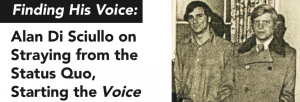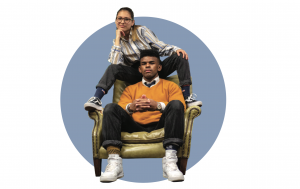Shiva Subbaraman is now the executive director of both the Women’s Center and the LGBTQ Resource Center, announced on Nov. 12. This staff transition marks a restructuring of the centers under united leadership, according to a statement from Vice President for Student Affairs Todd Olson.
“Shiva has provided visionary and caring leadership for our LGBTQ Resource Center for more than a decade, moving it from an initial idea to a vibrant and visible presence on campus,” Olson wrote. “I am confident that she will bring her talents to this new role in a very effective way.”
The Women’s Center had been without a director since Laura Kovach’s departure in the fall of 2018. And after former programming assistant Karla Rondon’s left the following summer, the center had no full-time staff members. Subbaraman’s new position will provide the first full-time leadership of the center in over a year.
Conversations about restructuring the centers and increasing staffing began even before Kovach left her position, Subbaraman said in an interview with the Voice.
“We had outgrown our capacities. The work had grown in complexity, the work has grown in depth, the university is now predominantly female-identified, the numbers of LGBTQ students arriving on our campus has grown,” Subbaraman said.
A working group of students, faculty, staff, and administrators including Olson and Jeanne Lord, Associate Vice President for Student Affairs, convened the following fall and spring semesters and decided that the center’s leadership should be restructured.
Subbaraman said she supports the restructuring while upholding the importance of maintaining each center’s distinct identity.
“The Women’s Center has been around for almost 30 years now, but the LGBT Center is relatively new. But they both came from student activism and student demands, right? And I don’t want those histories to be ever forgotten or erased,” Subbaraman said.
That being said, according to Subbaraman it is essential to assess the needs of today’s students so that she can best determine how the Women’s Center will operate.
“The history of origin is important, sure, but is this where the students are today? No. So even speaking for the LGBT Center, I can say that today’s LGBT students are very different from the students that came four years ago, let alone ten years ago when I first started,” Subbaraman said. “When I first started, I knew all the gay students, and they could all fit in the center. That’s no longer true today. That is a good thing, but it also means it’s more work. And the same thing has happened with the Women’s Center.”
Ben Telerski (COL ’23), a student assistant in the LGBTQ Resource Center, said he and the other student workers were informed of the restructuring a few weeks ago. He was at first concerned about the large undertaking of running two centers, but he later warmed to the idea.
“At first I was concerned, but that was also prior to when our new assistant director started, so now that we have two people full-time in the LGBTQ Resource Center, I think it will be much easier for her to also be overseeing the Women’s Center as well,” Telerski said in an interview with the Voice.
“I think it will help inform some of the overarching themes of both Centers’ programming, just by the nature of the increased collaboration. However, we have always partnered closely with the LGBTQ Center, and the Centers will still have their own separate leadership within them, so I don’t think anything too jarring will change as a result of this transition,” Caroline Sarda (COL ’20), an undergraduate assistant in the Women’s Center, wrote in an email to the Voice.
Subbaraman’s primary goal for the next few months is to hire more full-time staffers in the Women’s Center. After functioning as the only full-time employee in the LGBTQ Resource Center for the past 18 months, before the hiring of assistant director Dr. Amena Johnson, who began her position in the beginning of November, Subbaraman acknowledged the limitations caused by understaffing.
“I felt tethered. I felt like I had a two-month-old baby that I had to look after because I couldn’t leave. If I left and there was a crisis, who was gonna be there? There was no other adult in the space,” Subbaraman said.
While the search for an associate director of the Women’s Center is ongoing, Subbaraman also aims to hire two more full-time employees. As for the vacant associate director position, a hiring process is already underway. “They already started, job posted a few weeks ago, so they’re in the process of interviewing. So we will be bringing candidates to campus hopefully in the next few weeks. Students will be invited to come to meet with the candidates,” Subbaraman said.
Sarda, a member of the search committee, said she prioritizes an awareness of student needs in a candidate. “To me, it is most important that a candidate shows a deep commitment to intersectionality and student wellness, and a willingness to adapt and learn to best serve their community,” Sarda wrote.
Once the Women’s Center is more fully staffed, Subbaraman hopes it will allow her to engage in higher-level advocacy and fundraising.
Before going forward with specific plans, Subbaraman prioritized determining student needs and wants from the Women’s Center.
“I think it’s important that students know we’re back, but you know, am I going to be able to pull out everything in the next three months? No, because I think it’s time to really reimagine the work,” Subbaraman said. She cited two previous Women’s Center focus groups as initial steps to determining students’ needs.
“I’ve known what LGBT students want because that’s who I’ve worked with very very closely, but I think we need to do the same to figure out the diverse group of women and what you all want.”
One thing Subbaraman knows for sure is that the category of “woman” has become challenged and complicated in recent years. Despite the university now being majority female-identified, Subbaraman rejects the idea that all women have the same needs and can be treated like a monolithic group.
“I’m an immigrant, I’m a queer person, I was married to a man for a long time in my life, I’m a Hindu, I’m a lot of things that impact how I understand myself as a woman,” Subbaraman said. “Those are the conversations I feel we should be having now, in the Women’s Center, to allow our students to explore the complexity of who they are and what does it mean to be a woman in the 21st century.”
Telerski echoed Subbaraman’s goal of determining how the Women’s Center fits into Georgetown’s social landscape.
“They both revolve around issues of gender and sexuality, and also with trans and nonbinary individuals, where does that fit in? Should they go to the Women’s Center for certain things because it’s a gender issue or should they go to the LGBTQ resource center because it’s queer issues?” Telerski said. “It’s a hazy line of where certain things fall under each center, and that’s something that seems to be ongoing as we figure that out.”
Sarda affirmed that the centers will maintain their independence, but she also looks forward to the intersectional initiatives that could result from unified leadership.
“Both Centers will certainly still have their own independent programming, such as Women’s History Month and OUTober,” she wrote.“But I think this transition provides an opportunity to reimagine the ways in which our work intersects with each other’s, and how both Centers can complement one another in the work they do.”





